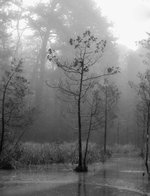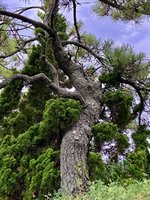CapeCodBonsai
Shohin
At least you are able to admit that the error was made by you. You have a long way to go but, that’s a start.I thought he was talking about trees in the pine barrens
Neither you nor I were in New Jersey looking at the trees that Gr8tfuldad was referring to. Unlike you, I did not make absurd guarantees in an attempt to discredit the original poster. After seeing your dismissive reply, I gave supporting reasons why I THOUGHT his area could have JBP. Then, unlike you, I actually provided Gratefuldad with some of the information he was seeking.
I talked about other areas of the Northeast in order to support the idea that it wasn’t “too much of a stretch to believe that JBP have made it to the shores of New Jersey.”
I cited the NYT article to illustrate that Long Island was another example of a Northeast coastal area where Japanese Black Pine had been planted (by the many thousands).
For whatever reason, that one addition shifted your focus from New Jersey to “debating” me about whether or not JBP existed on Long Island.
(Which, by the way, I couldn’t care less whether they still exist there or not . . . that seems to be the hill that you are choosing to die on.)
The only reason I mentioned Long Island from that moment forward was in reply to YOUR statements about Long Island.
Throughout your entire stream of nonsense, you’ve reworded what’s been stated. You do realize that anyone can go back and read what has been previously posted and in the context in which it was posted, right??
You made the ridiculous claim that “ALL” of the “pines growing alongside roadsides, in public lands, parks and beaches around [you]” are Pitch Pines.
I posted the Cornell University Cooperative Extension of Suffolk County’s paper to show that they were planted in your area. It states that the non-native species were “so widely planted that it seems a natural feature of the landscape”. The informational paper goes on to say the trees that were dying were the ones “growing in stressful conditions”.
Even though I never said that they did, you felt the need to say that “The Saratoga Tree Nursery stopped growing them around 34 years ago.
THE SARATOGA NURSERY DOES NOT GROW JBP ANY MORE”.
You went on to say that “They grow Scotch pines, Red Pines Pitch Pines and Eastern White Pines”
So, even though Japanese Black Pine can live as long as 150 years and Long Island agencies have access to Scotch Pine, Red Pine, and Eastern White pine from the Saratoga Nursery, we have to accept your claim that all of the pines growing alongside roadsides, in public lands, parks and beaches in Suffolk County are Pitch Pines?
… based on hazy reasoning like you drive around a lot and you have a relative that does erosion control???
Can you let go of your ego for one moment and try to understand why someone might post additional outside information from authoritative sources? I am going to anticipate your answer as being “no” and assume that you’ll go on and on about how you’re the expert and I’m the devil … blah, blah, blah.








